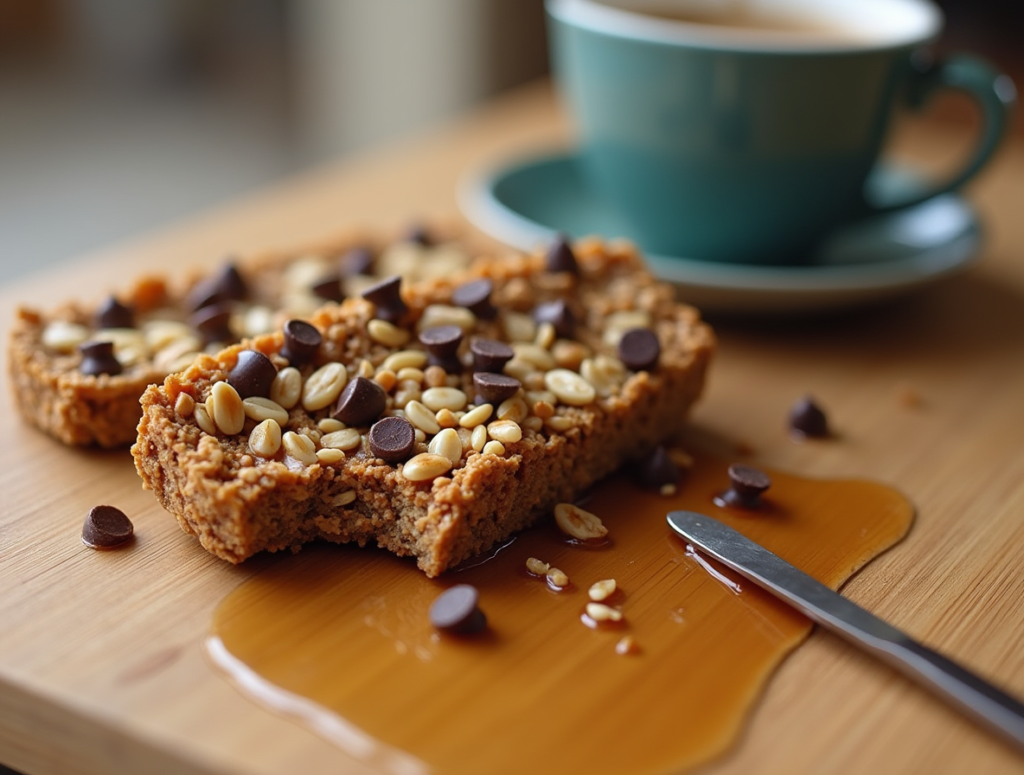Dessert is a beloved part of many cultures, offering a sweet conclusion to meals and serving as a delightful treat throughout the day. But have you ever wondered, When to Eat Dessert? Understanding the best times to indulge can enhance your enjoyment and even contribute to a balanced diet.
In this comprehensive guide, we explore various aspects of dessert timing, from morning indulgences to late-night cravings, providing you with dessert timing tips to satisfy your sweet tooth thoughtfully. Whether you’re curious about festive traditions or everyday treats, you can also discover what Americans eat for dessert at Christmas to draw inspiration for your next dessert moment.
Introduction to Eating Dessert
Desserts are more than just sugary finales to our meals; they hold significant cultural and social importance. Defined as sweet courses typically enjoyed after the main meal, desserts vary widely across different cultures, reflecting local ingredients and traditions. Whether it’s a slice of tiramisu in Italy, crème brûlée in France, or baklava in Turkey, famous European desserts each tell a story of their region’s culinary heritage.
In daily routines, dessert plays multiple roles. It can be a reward after a hard day, a way to celebrate special occasions, or simply a moment of pleasure to brighten your day. However, knowing When to Eat Dessert? can help you enjoy these sweet treats without disrupting your dietary balance.
Importance of Timing When Eating Dessert
Why Timing Matters
The timing of dessert consumption can significantly impact your digestion, energy levels, and overall satisfaction. Eating dessert at the right time ensures that your body can efficiently process the sugars and fats, preventing energy crashes and promoting better digestion. Additionally, consuming dessert at specific times can enhance your meal experience, making it more enjoyable and fulfilling.
Benefits of Proper Dessert Timing
- Enhanced Digestion: Eating dessert after a meal allows your body to utilize the nutrients more effectively.
- Energy Boost: Consuming sweets in the afternoon can provide a much-needed energy boost to power through the rest of your day.
- Improved Satisfaction: Savoring dessert after meals can lead to greater satisfaction, reducing the likelihood of overeating.
Understanding dessert timing tips can help you integrate sweet treats into your diet in a balanced and enjoyable manner.
Morning Desserts: Pros and Cons
Benefits of Morning Sweets for Energy
Starting your day with a sweet treat can provide an immediate energy boost, helping you stay alert and focused. Desserts like yogurt parfaits with honey and granola or a small pastry can kickstart your metabolism and satisfy morning cravings. When should you eat dessert? In some cultures, enjoying a sweet breakfast is a common practice that aligns with the body’s need for energy after a night’s rest.
Potential Downsides of Morning Desserts
However, indulging in desserts too early can lead to spikes in blood sugar levels, potentially causing energy crashes later in the day. Additionally, consuming high-sugar foods in the morning might not be ideal for those aiming to maintain a balanced diet or manage their weight. It’s essential to choose healthy dessert timing options that provide nutritional benefits without excessive sugars.
Examples of Morning Desserts
- Fruit and Yogurt Parfait: Layers of yogurt, fresh fruits, and a drizzle of honey.
- Whole Grain Muffins: Slightly sweetened with natural sweeteners like applesauce.
- Smoothies: Blended fruits with a touch of honey or agave syrup.
These options offer a balanced approach to enjoying sweets in the morning while providing necessary nutrients.

Dessert After Lunch: A Popular Tradition
Why Dessert is Common After Lunch
Eating dessert after lunch is a well-established tradition in many cultures. It serves as a delightful conclusion to the meal, offering a moment of relaxation and enjoyment. Dessert after meals can also help signal the end of the dining experience, allowing you to transition smoothly to other activities.
Examples of Balanced Treats
- Fruit Tart: A light and refreshing option that includes fresh fruits and a delicate crust.
- Cheese Platter: Pairing cheese with a small sweet treat like honey or fig jam.
- Light Pastries: Such as eclairs or small tarts that are not overly heavy.
Choosing balanced dessert consumption after lunch ensures that you satisfy your sweet cravings without overindulging.
Dessert After Dinner: A Classic Approach
Benefits of Evening Desserts
Enjoying dessert after dinner is a classic approach that many people cherish. It provides a satisfying end to the day, allowing you to unwind and enjoy a sweet treat without feeling guilty. Post-dinner desserts can also enhance social gatherings and family dinners, making the meal more memorable.
Potential Impacts on Sleep and Metabolism
While evening desserts are enjoyable, it’s essential to consider their impact on sleep and metabolism. Consuming heavy or sugary desserts close to bedtime can disrupt your sleep patterns and potentially lead to weight gain if not balanced with physical activity. Opting for lighter options can mitigate these effects.
Examples of Evening Desserts
- Dark Chocolate: A small piece can satisfy your sweet tooth without being too heavy.
- Panna Cotta: A creamy yet light dessert that doesn’t weigh you down.
- Fruit Salad: A refreshing and healthy option to conclude your meal.
These choices align with smart dessert habits, ensuring that you enjoy dessert without compromising your health.

Dessert as a Midday Snack
When and Why Desserts Can Be a Satisfying Break
Incorporating dessert as a midday snack can be a strategic way to manage hunger and maintain energy levels. A sweet treat in the afternoon can provide a necessary boost, helping you stay productive and focused. Ideal dessert time for a midday snack typically falls between lunch and dinner, around 3 PM, when energy levels may dip.
Examples of Midday Dessert Snacks
- Granola Bars with a Touch of Honey: Quick and easy to prepare.
- Small Cookies: Like oatmeal raisin or almond biscotti.
- Fruit and Nut Mix: Combining sweetness with protein for sustained energy.
These options offer a satisfying break while keeping your sweet indulgence in check.
Desserts Before or After Exercise
Best Times to Consume Desserts Around Workouts
Timing your dessert consumption around exercise can optimize your energy levels and aid in recovery. Eating a dessert rich in carbohydrates before a workout can provide the necessary fuel, while consuming protein-rich desserts afterward can help with muscle recovery. Dessert timing tips around exercise can enhance your fitness regimen and overall performance.
Examples of Pre and Post-Exercise Desserts
- Pre-Exercise: A banana with a drizzle of honey or a small energy bar.
- Post-Exercise: Protein-rich smoothies with fruits or Greek yogurt parfaits.
These choices ensure that you gain the benefits of dessert while supporting your fitness goals.

Special Occasions and Celebrations
Role of Dessert Timing During Parties, Holidays, and Celebrations
During special occasions and celebrations, dessert plays a central role in enhancing the festive spirit. Whether it’s a wedding, birthday, or holiday gathering, desserts like cakes, pastries, and sweets are integral to the celebration. European holiday desserts such as panettone, stollen, and fruitcake are staples during these times, symbolizing joy and togetherness.
Examples of Celebration Desserts
- Wedding Cakes: Elaborate multi-tiered cakes that serve as a centerpiece.
- Holiday Cookies: Like gingerbread men during Christmas or traditional pastries during Easter.
- Festive Puddings: Such as Christmas pudding or holiday soufflés.
These desserts not only satisfy sweet cravings but also add to the cultural and emotional significance of the occasion.
Cultural Differences in Dessert Timing
Comparison of Dessert Habits Across Different Countries and Cultures
Dessert timing varies widely across different cultures and countries. In some places, dessert is an essential part of every meal, while in others, it is reserved for special occasions. For example, in many European countries, dessert is a standard part of the meal, enjoyed right after the main course. In contrast, in some Asian cultures, sweet treats are often consumed as snacks throughout the day rather than as a post-meal course.
Examples of Cultural Dessert Timing
- France: Dessert is typically enjoyed after dinner, often accompanied by coffee.
- Japan: Sweets are enjoyed as part of tea ceremonies and as snacks during the day.
- Mexico: Desserts like churros are enjoyed at any time, often paired with beverages.
Understanding these cultural dessert timing differences can enhance your appreciation of global dessert traditions and inspire you to try new sweet habits.
Nutritional Considerations
Calorie Content, Sugar Levels, and Choosing Healthier Dessert Options
When considering What is the Most Popular Dessert in Europe?, nutritional content plays a significant role. Many traditional desserts are high in calories and sugar, which can impact health if consumed excessively. However, there are healthier dessert options that allow you to enjoy sweet treats without the guilt.
Examples of Healthier Dessert Choices
- Fruit-Based Desserts: Such as fruit tarts or sorbets, which are lower in calories and provide essential vitamins.
- Dark Chocolate: Rich in antioxidants and lower in sugar compared to milk chocolate.
- Greek Yogurt with Honey and Nuts: A protein-rich option that satisfies sweet cravings while supporting muscle health.
Choosing healthy dessert timing and mindful dessert consumption can help you maintain a balanced diet while still enjoying your favorite sweets.
Managing Dessert Cravings
Techniques for Controlling Cravings While Enjoying Occasional Treats
Craving desserts is a common experience, but managing these cravings can help you maintain healthy eating habits. Techniques such as mindful eating, portion control, and choosing healthier alternatives can help you satisfy your sweet tooth without overindulging.
Tips for Dessert Cravings Management
- Mindful Eating: Focus on the flavors and textures of your dessert, savoring each bite.
- Portion Control: Opt for smaller servings to enjoy the taste without excessive intake.
- Healthy Substitutes: Replace high-sugar desserts with naturally sweet options like fruit.
These strategies align with smart dessert habits, ensuring that you can enjoy desserts without compromising your health goals.
Dessert Timing for Weight Management
How to Incorporate Desserts While Maintaining a Healthy Diet
Incorporating desserts into a healthy diet requires mindful timing and portion control. Eating desserts in moderation and choosing nutrient-dense options can allow you to enjoy sweet treats without hindering weight management efforts. Balanced dessert consumption involves integrating desserts into your overall dietary plan in a way that complements your nutritional needs.
Tips for Including Desserts in a Healthy Diet
- Plan Your Desserts: Allocate specific times and portions for dessert to prevent overindulgence.
- Choose Nutrient-Rich Options: Opt for desserts that provide additional nutrients, such as fiber or protein.
- Stay Active: Pair dessert consumption with regular physical activity to balance calorie intake.
These approaches ensure that you can enjoy desserts as part of a balanced and healthy lifestyle.
Timing Desserts for Children
Best Times for Kids to Enjoy Desserts Without Spoiling Meals
For children, dessert timing is crucial to ensure it doesn’t interfere with their overall nutrition. Serving desserts after meals can help satisfy their sweet cravings while maintaining a balanced diet. Dessert timing tips for children focus on integrating sweets in a way that complements their growth and energy needs.
Examples of Kid-Friendly Dessert Timing
- After Dinner: A small serving of ice cream or a fruit-based dessert post-meal.
- Midday Snacks: Healthy treats like yogurt with honey or homemade granola bars.
- Special Occasions: Allowing desserts during celebrations to make them feel included and special.
These practices support balanced dessert consumption in children, promoting healthy eating habits from a young age.
Dessert and Mental Health
How Dessert Timing Can Boost Mood and Contribute to Emotional Well-Being
Desserts can play a role in enhancing mood and providing emotional comfort. Consuming sweets at the right times can act as a mood booster, offering a sense of pleasure and relaxation. Healthy dessert timing can contribute to emotional well-being by providing a moment of indulgence and joy in your daily routine.
Benefits of Dessert for Mental Health
- Mood Enhancement: Sweets can trigger the release of endorphins, improving your mood.
- Stress Relief: Enjoying a favorite dessert can provide a comforting break from daily stressors.
- Social Connection: Sharing desserts with others fosters social bonds and a sense of community.
These benefits highlight the positive impact of smart dessert habits on mental health, making dessert a valuable part of a balanced lifestyle.
Frequently Asked Questions (FAQs)
What Makes European Desserts Unique?
European desserts are unique due to their rich history, diverse regional influences, and emphasis on high-quality ingredients. The combination of traditional techniques and innovative flavors sets them apart, making each dessert a work of culinary art.
Which European Country is Known for the Sweetest Treats?
While many European countries are renowned for their sweet treats, France stands out for its exquisite pastries and desserts like crème brûlée and éclairs. However, Italy’s tiramisu and gelato, as well as Austria’s Sacher Torte, also make significant contributions to famous European desserts.
What is the Healthiest European Dessert?
While many European countries are renowned for their sweet treats, France stands out for its exquisite pastries and desserts like crème brûlée and éclairs. However, Italy’s tiramisu and gelato, as well as Austria’s Sacher Torte, also make significant contributions to famous European desserts.
When to Eat Dessert to Lose Weight?
Incorporating dessert into a weight-loss plan is all about moderation and timing. Experts often suggest enjoying a small, balanced dessert right after a nutritious meal rather than on an empty stomach. This timing helps stabilize blood sugar levels and can prevent overeating later. Additionally, choosing desserts with wholesome ingredients and natural sweeteners can support your weight-loss goals without compromising satisfaction.
When to Eat Bulletproof Dessert?
Bulletproof desserts, typically high in healthy fats and low in carbohydrates, are designed to provide sustained energy and satiety. These can be a great option for breakfast or a mid-morning snack, as they can help keep you energized without causing a quick spike in blood sugar. Enjoying a bulletproof dessert earlier in the day can support a balanced energy level and help curb cravings for more sugary options later.
What to Bring for Dessert When You’re Not Eating Sugar?
When avoiding sugar, you can still bring a delicious and satisfying dessert option. Consider sugar-free alternatives such as a fruit salad with a squeeze of lemon, Greek yogurt with a sprinkle of nuts and cinnamon, or a slice of sugar-free cheesecake made with natural sweeteners like stevia or erythritol. These options allow you to enjoy a sweet treat that aligns with your dietary choices while still offering delightful flavors and textures.
Conclusion
Understanding When to Eat Dessert? can enhance your enjoyment and contribute to a balanced diet. Whether you choose to indulge in a morning treat, savor a sweet after lunch, or enjoy a post-dinner delight, timing plays a crucial role in how desserts fit into your daily routine. By incorporating dessert timing tips and choosing healthier options, you can satisfy your sweet cravings thoughtfully and maintain a balanced lifestyle.
Remember, dessert is meant to be enjoyed, and with the right timing, it can be a delightful part of your meals and daily treats. Embrace smart dessert habits, explore various dessert timings, and savor the sweet moments that desserts bring to your life.

